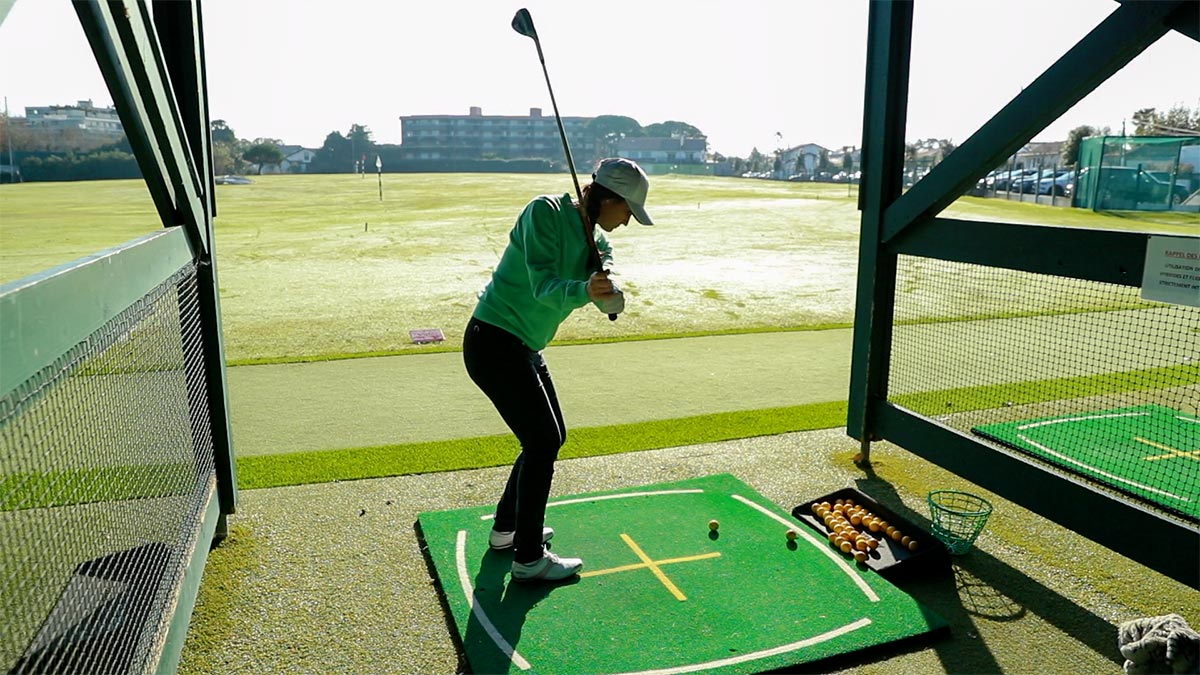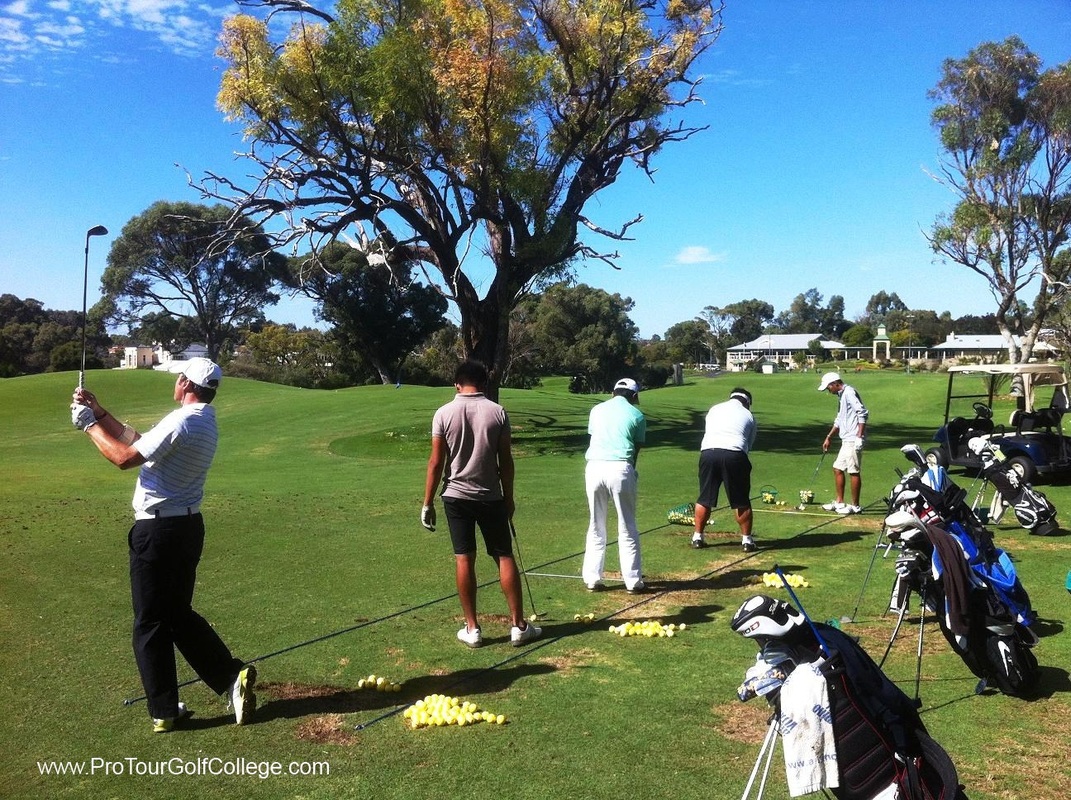
The perfect golf swing feels effortless and natural. The swing replaces the violent spinning of the body with controlled body movement. This reduces effort and maximizes power. The PGA Tour players use one-plane swings. This simple technique is easy to learn. It's also extremely powerful.
One-plane swings are a PGA Tour player's best friend
A one plane swing is one where the body angle and tilt remains the same during the backswing. This is contrary to a 2P swing, in which the body rotates around your lead foot in reverse K. The lead knee returns to its normal position following a one-plane swing.
One-plane swings have a lot of popularity with golfers because they are simple. By keeping the golf swing simple, golfers are able to achieve consistent results and repeatability.

They are easy to understand
You can improve your golf game by following a few simple tips. It is a great way to improve your swing. Keep track of every swing. You should keep track of the number of greens that you hit in regulation and how many fairways were hit. Also, note how many puts you made. Review your numbers after each round to see what needs improvement. An app like GHIN allows you to keep track and see which areas are improving.
Another tip is to use your entire body. Instead of just focusing on the arms, you should use your shoulders, hips, and knees to turn. This will help reduce injury potential and improve the power of your swing. To help you shift your weight, it is important to keep your feet on the ground while you are setting up.
They feel powerful
A perfect golf swing feels effortless and powerful. This is largely because you do not over-use your body to make the swing. You need to keep your body in a straight line so that you can move quickly with the club. You may be thinking that this is counter-intuitive, but the truth is that your body's rotation should precede your arm swing. You are effectively using your body’s rotation to maximize your power and minimize effort.
The downswing is a critical part of a powerful golf swing. The forces that push the ball forward/backward are created by the combination of the front and trail legs. The optimal hip and knee flexion varies from player to player, so finding the right place to apply bigger ground reaction forces is a personal process.

They are very easy to achieve.
You can improve your golf game by learning how to swing the ball correctly. The basics will make it easy to hit the golf ball. The most important thing to remember is that even the smallest of mistakes can make your swing sloppy and cost you a round. You can still achieve the perfect golf swing, but it will take time, concentration, effort, and patience.
Contact is the most crucial part of a good golf swing. In order to achieve this, you should start your swing from a 45-degree angle and move up only halfway through your swing. Throughout your takeaway, your hands should remain close to your ground. This will ensure that you have the perfect wrist hinge. This wrist hinge will also help you align your clubhead to the ground.
FAQ
What are the essential items to take on a trip to the golf course?
Keep some snacks and drinks handy. Also, remember to pack your favorite tee shirt, sunglasses, gloves, and towels.
How is golf played?
The game of golf is played on an 18-hole course using a set of rules called the Rules of Golf.
The first stroke is taken behind a designated teeing area. The course is divided into several holes, where players alternate hitting the balls. Each hole has a different number of strokes, depending on how far it is from the teeing area.
There are three main types used in golf:
-
In a drive shot, players use clubs to hit the ball as far as possible. This shot is considered to be the most important.
-
An approach shot requires that players hit the ball within the specified area of the hole.
-
A putt, where players attempt to sink the ball into the cup by rolling it along the ground.
Each hole must be completed by the player who has put all his/her putts in. Failure to do so will result in a loss of one stroke per unmade putt.
Some players may prefer to play with their caddy or partner. They will hold and carry the club during each round. Although the caddie does not have any role in the final outcome, they can offer advice and guidance about strategy and proper etiquette.
What is a Bogey?
A bogey is an imaginary number used as a target for golfers. It is not part of the game. Instead, it serves as a scoring system. The hole goes to the player who is closest to the number.
Jock HUTCHISON, the first professional player from Scotland, invented the concept of a “bogey”. The idea was conceived by Jock Hutchison, a professional golfer from Scotland.
He wanted to keep track his progress so he wrote down a number and stuck it to the wall over his bed. This was later called the "Hutchy Bogey."
Is golfing dangerous?
Although golf is not considered an extremely dangerous sport, it can cause injury. One example is a broken arm that you could sustain while swinging a clubs.
However, most injuries can be caused by falling from your golf trolley.
How does golf score?
The scorecard is divided in four categories: StrokePlay, Par 3, 4, and 5, respectively. Each category can further be broken down into strokes. A player must complete 18 holes (Par 72) to reach par.
The lowest score wins.
What happens after a round of golf is over?
The player with the lowest score at the end of each round wins. If two players tie for first place they each win.
If there are more than three players who tie for the first place after 18 holes they will share the money.
The tournament committee will decide who receives the prize money if there are only two players left tied after 18 holes.
Statistics
- Buying a set of Titleist or Taylor-Made irons for nearly $1,000 is simply not necessary and likely a waste of money. (golficity.com)
- In the United States, women made up 25 percent of golfers in 2021, which was up from 19 percent in 2011, and junior female golfers account for 35 percent or 1.1 million golfers.[50] (en.wikipedia.org)
- In the United States, the number of people who play golf twenty-five times or more per year decreased from 6.9 million in 2000 to 4.6 million in 2005, according to the [51] (en.wikipedia.org)
- They do this by means of assessing and rating courses according to the average good score of a "bogey golfer," a player with a handicap of around 20. (en.wikipedia.org)
External Links
How To
How do you play better golf in windy conditions?
Golf is played in open areas on grassy areas. It is one of the most popular sports around the globe. There are many courses available, including public and private. Indoors, golf is also possible at malls and indoor arenas. You must hit golf balls into a series of holes. Each hole is equipped with a fairway, rough and hazards (e.g. water) The type of shot that is required will determine which driver, wedge or long iron the players use. Players may be required to carry the ball a certain distance before they can hit it. Or, they may just have to drop it in the cup. The conditions that a player experiences when playing outdoors golf can have an impact on how they hit their shots. These conditions include speed, temperature and humidity.
There are two main types of winds: crosswinds and headwinds. Headwinds blow left to right and crosswinds from left to right. If the wind blows toward the golfer it means that he/she hits against the wind. But if it blows away from him/her it will mean that he/she hits with the wind. Playing golf in a strong wind is much harder because the ball tends to fly higher and further. This makes it harder for the player controlling the ball's trajectory. To counter these effects, players keep the club's face perpendicular with the ground. They strike the ball with maximum force and contact so it is fully in contact with the ground. Despite flying lower in stronger wind it travels farther because of the increased resistance to air.
You need to practice a lot when playing golf in the wind. Wind affects the flight path and trajectory of the ball. Good golfers should know the current wind conditions in their area. He/She would adjust his/her swing accordingly so that he/she can hit the ball cleanly without losing any energy. Another important factor to consider is the location of the wind. The wind doesn't always travel the same way in all directions. The breeze from the ocean is typically very light but is stronger closer to the shore. Similar to previous examples, wind blows at a higher speed close to ground. The golfer must therefore pay attention to the wind direction as well as intensity.
Golf in the wind is a constant adjustment process. You need to watch the wind and make sure that your swing is aligned properly. Also, you have to learn how to read the wind and adapt your swing accordingly.